Do you long for the smell and taste of fresh herbs in your favourite dishes, but find yourself limited on space to grow them?
Well, creating a kitchen herb garden can be an easy way to start growing some herbs at home without the need for outside space. Not only will you always have fresh herb options for your cooking, but you don't even have to venture outside to pick them!
Discover how to create a small space-friendly kitchen herb garden by following these simple steps.
Choose the best spot for your herb garden
Creating an herb garden can be a therapeutic and rewarding experience for anyone with a green thumb. However, choosing the perfect spot for your herb garden is crucial to its success. Consider the amount of sunlight your chosen area receives throughout the day as this will determine what type of herbs you can cultivate. Some herbs require full sun exposure while others only need partial shade.
It is vital to consider the drainage of the area. Herbs do not do well in soil that is constantly wet and boggy. The key is to find a balance between sunlight and good drainage, and with a little research, you can find the perfect spot to grow a bountiful herb garden. Start planning now and enjoy the bounty of your garden for years to come.
Decide what herbs to grow
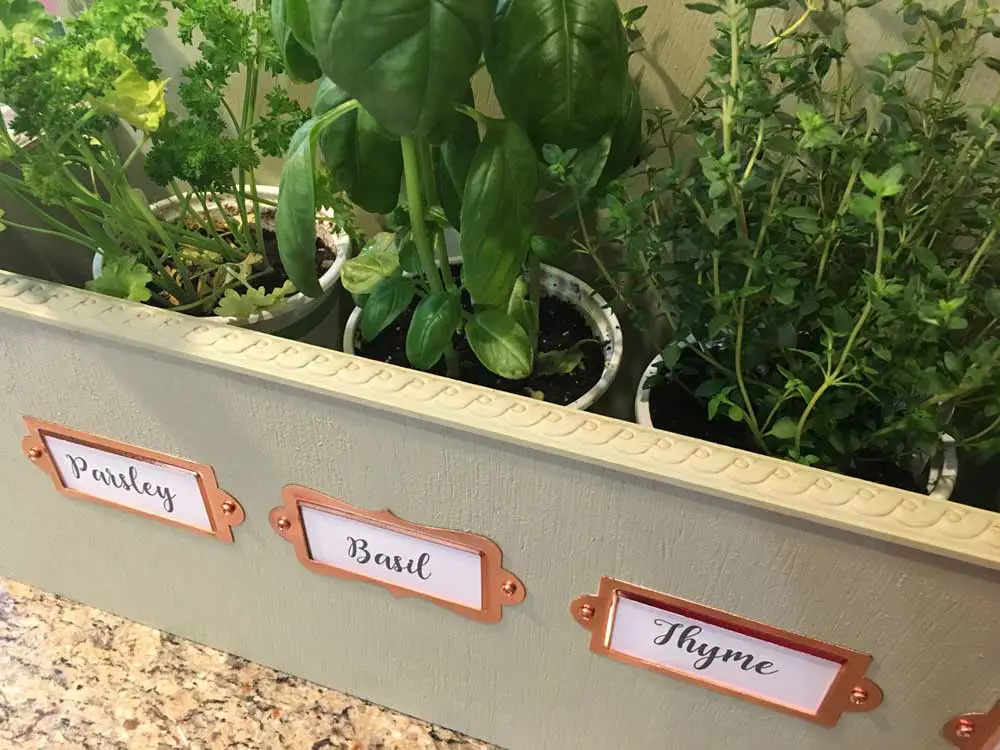
Image credit: thekimsixfix.com
Growing herbs can be a great addition to any garden or even just a simple windowsill. When deciding what herbs to grow, it is important to choose ones that are easy to maintain. This means looking for plants that are resilient and adaptable to different environments. Some great options include basil, chives, and thyme.
These herbs are relatively low-maintenance and can be grown in small pots or larger garden beds. Not only can they add some much-needed flavour to your cooking, but they also bring some natural beauty to your home. So, try your hand at growing some herbs and enjoy the many benefits they have to offer!
Kitchen window herb garden
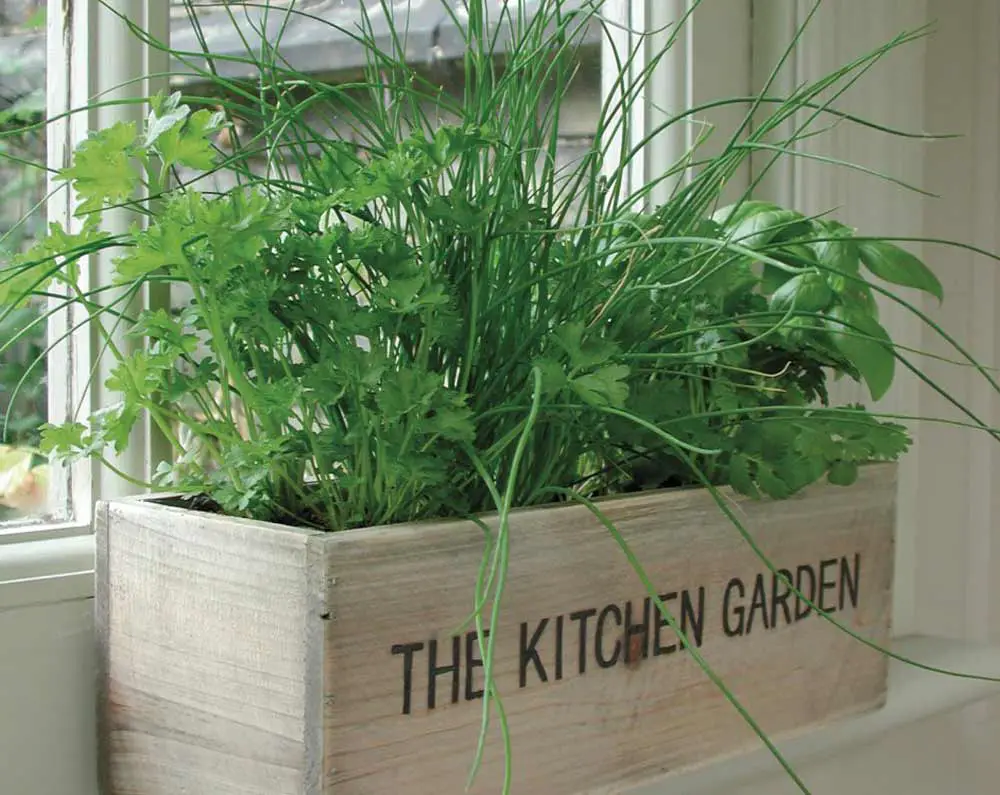
Image credit: craftyarts.co.uk
Imagine stepping into your kitchen and being hit with a wave of fresh, fragrant herbs. With a kitchen window herb garden, you can make this a daily reality. Not only does having an herb garden in your kitchen provide easy access to fresh ingredients while cooking, but it also adds a touch of greenery and freshness to your home decor.
You can find a lot of different features on the Seed Parade page, and choose the one that suits you best. Plus, it's a fun and rewarding way to get into gardening without needing a lot of space or experience. Simply select your favourite herbs, arrange them in a sunny windowsill location, and watch them grow! Before you know it, you'll have a thriving garden right at your fingertips.
Kitchen herb garden kit
Picture this: you're in the kitchen cooking up a storm, and you realise you're out of fresh herbs. Do you run to the store and hope they have what you need? Or do you simply walk over to your very own kitchen herb garden kit and pluck a few sprigs of rosemary or basil? We think the latter sounds much more enjoyable, and that's exactly what you'll get with a kitchen herb garden kit.
Growing your own herbs means you always have fresh, flavourful ingredients at your fingertips. Plus, it's a fun and rewarding hobby that adds a touch of greenery to your home. Whether you're a seasoned chef or a beginner cook, a kitchen herb garden kit is a must-have for any culinary enthusiast.
Kitchen herb planter ideas
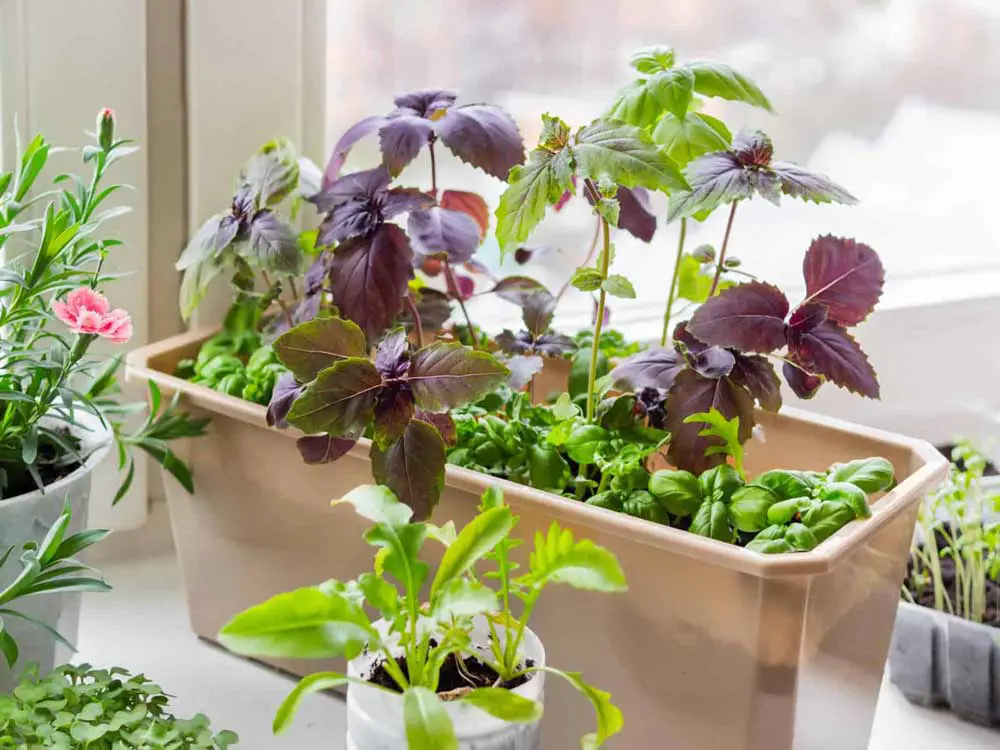
Image credit: fooddrinklife.com
Adding fresh herbs to your meals can elevate dishes from boring to delicious. What better way to ensure a steady supply of your favourite herbs than with a kitchen herb planter? There are plenty of ideas to choose from, depending on your space, style, and needs. You could choose a hanging planter for those with limited counter or floor space or a tiered planter for those who want to grow multiple herbs at once.
You could even repurpose old containers like mason jars or tin cans for a rustic touch. Whichever herb planter you choose, having fresh herbs on hand is sure to add a burst of flavour to your everyday cooking.
Invest in pots that will fit into the area
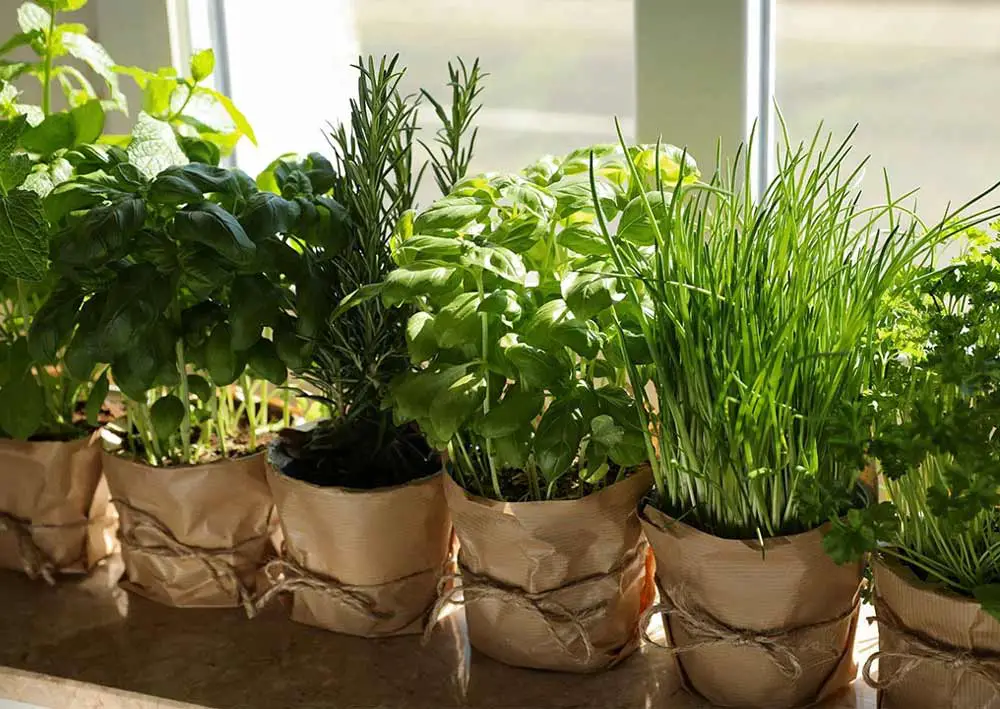
Image credit: mitre10.co.nz
When it comes to gardening, it's important to make the most of the space you have available. That's why choosing the right pots is so crucial. If you invest in pots that are too big or too small for the area you have designated, you'll end up with an unbalanced look that just won't work. Instead, take the time to carefully measure the space and choose pots that are just the right size.
Not only will this ensure that everything looks great, but it will also help your plants thrive by providing them with the perfect amount of room to grow. So whether you're working with a tiny balcony or a sprawling garden, take the time to choose pots that are a perfect fit for your space. You'll be glad you did!
Prepare the soil for planting
Preparing the soil for planting is essential for a fruitful garden. One way to do so is to mix compost and potting soil together. Not only does this make the soil nutrient-rich, but it also improves the drainage and water retention capabilities of the soil. Compost is an organic material that provides the soil with much-needed nutrients while potting soil adds structure to the soil.
This combination is perfect for growing healthy and fruitful plants. Start by adding 1-2 inches of compost to the topsoil, and mix it evenly with the potting soil. Once the soil is prepared, you're ready to plant, and your garden will surely thrive.
Follow the instructions on the seed packets
Growing your own herbs can be a fun and rewarding experience, but it's important to plant them carefully to ensure their success. Be sure to read the instructions on the seed packets to determine the best planting depth and spacing for your particular herb. Some herbs, like basil, need plenty of sunshine, while others, like mint, prefer shadier conditions.
By planting your herbs carefully and following the instructions on the seed packets, you'll be on your way to enjoying delicious and fresh herbs in no time!
Water regularly and mulch around the plants
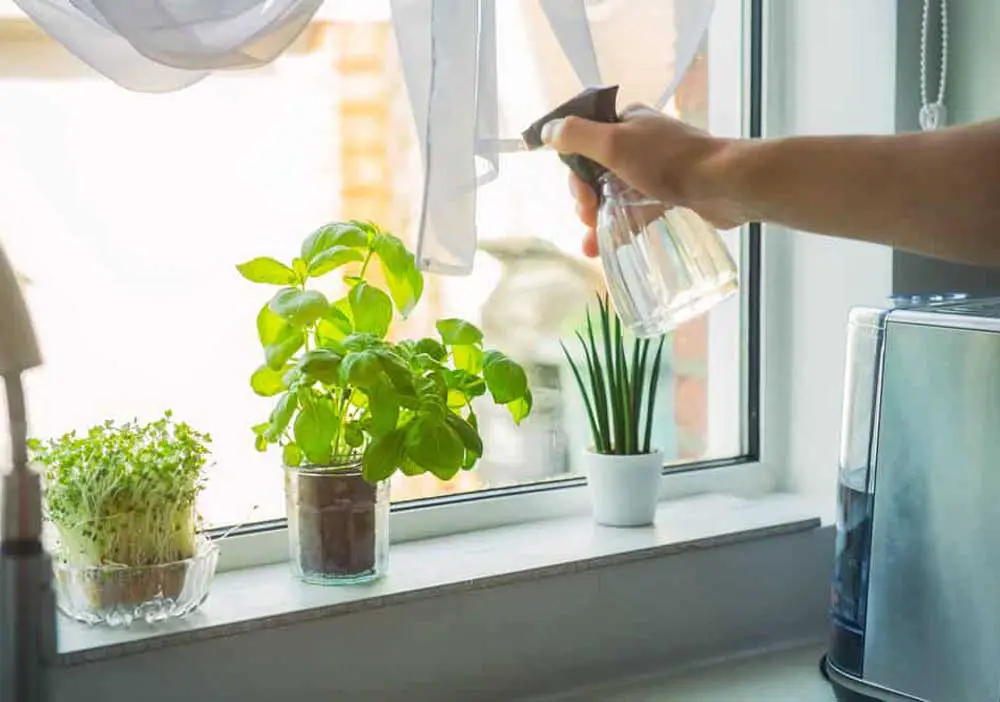
Image credit: outdoorhappens.com
As a plant parent, one of the most important things you can do for your green babies is to keep them hydrated! Watering regularly is key to ensuring your flora friends thrive. But it's not just about the frequency of watering, it's also about how effectively you can retain moisture. That's where mulching comes in. By placing organic matter around your plants, you can help them retain water and protect them from the sun's harsh rays.
Think of mulch as a protective blanket for your plants, shielding them from the elements and giving them the moisture they need to flourish. So grab a watering can and some mulch, and get ready to watch your plants thrive!
Creative Companion Planting
Companion planting is a strategic gardening technique that involves pairing plants to maximise their growth and overall health. By carefully selecting compatible herbs, vegetables, or flowers, you can create a harmonious ecosystem within your kitchen herb garden.
When choosing companion plants for your herb garden, consider factors such as nutrient requirements, pest control, and space utilization. For instance, planting basil alongside tomatoes can improve the flavour and growth of both plants, while repelling harmful pests.
Similarly, interplanting rosemary with cabbage can deter cabbage moths and promote healthier growth for both plants. By leveraging the symbiotic relationships between different plant species, you can create a more resilient and diverse herb garden. Furthermore, companion planting can offer aesthetic benefits.
Pairing herbs with visually appealing flowers or ornamental plants can enhance the overall appeal of your garden while attracting pollinators.
Harvesting and Maintaining your Kitchen Herb Garden
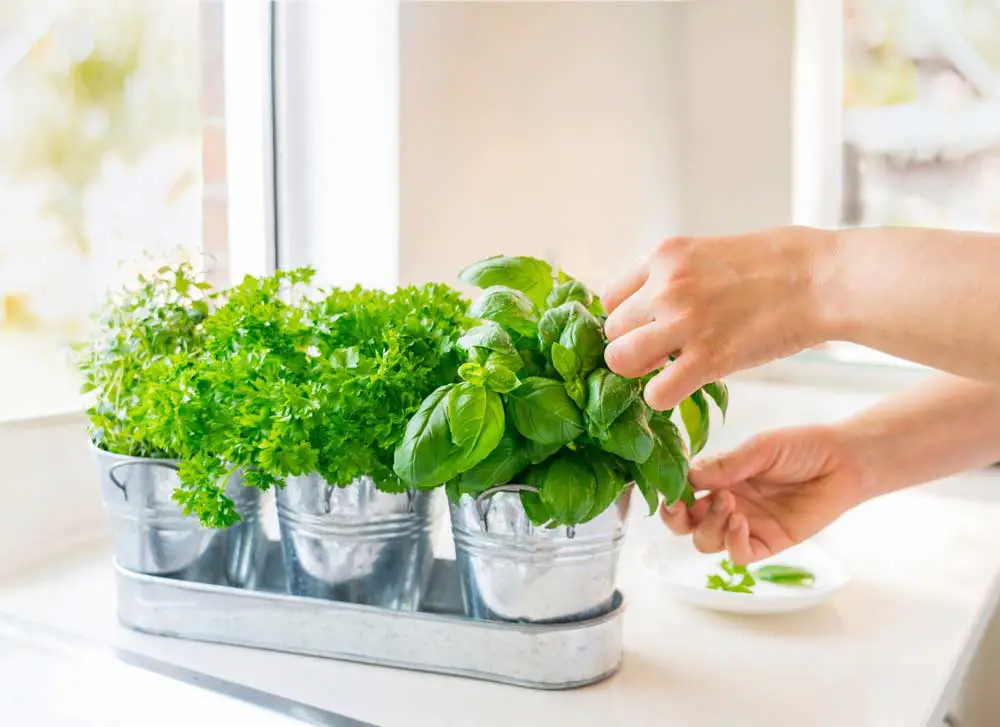
Image credit: fullforlife.com
Once your kitchen herb garden starts flourishing, it's important to know how to properly harvest and maintain your herbs for long-lasting enjoyment, ensuring a continuous supply of fresh and flavoursome herbs.
Harvesting herbs at the right time is crucial to maximise their flavour and potency. Most herbs are at their best flavour and aroma just before they flower. It's recommended to harvest herbs in the morning when their essential oils are concentrated. Use sharp pruners or scissors to make clean cuts, and avoid removing more than one-third of the plant at a time, allowing it to continue growing and replenishing.
Proper maintenance is essential for the longevity of your herb garden. Regularly remove any dead or yellowing leaves to promote healthy growth and prevent the spread of diseases. Prune the plants to maintain their shape and prevent overcrowding. Additionally, consider fertilizing your herbs with organic, slow-release fertilizers to provide essential nutrients. Storing harvested herbs correctly is crucial to preserve their flavour and freshness.
My Final Thoughts
Herbs are a wonderful addition to any kitchen as they can add flavour to meals and provide natural health benefits. There is also something truly special about growing herbs in your own home and with the right amount of care and attention, it is possible to have a successful herb garden that can provide you with fresh produce for many years.
With a little preplanning of your kitchen area, you can make the most of the space you have available for a kitchen wall herb garden, whether it’s a kitchen window or a planter box.
The key to success is properly preparing the soil, choosing robust herbs that thrive in your environment, having adequate drainage and sunlight, and taking regular care of your plants by providing them with water and mulch.
With these tips in mind, you will soon be on your way to creating an amazing oasis of herbs in your own home.


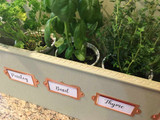
 Author: Matthew Chiappini
Author: Matthew Chiappini